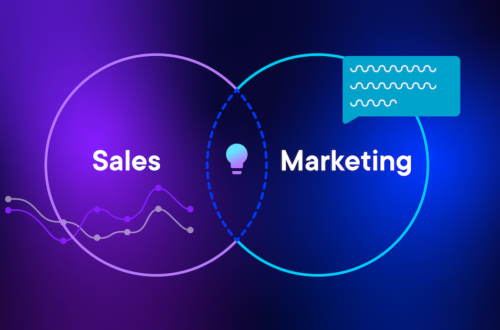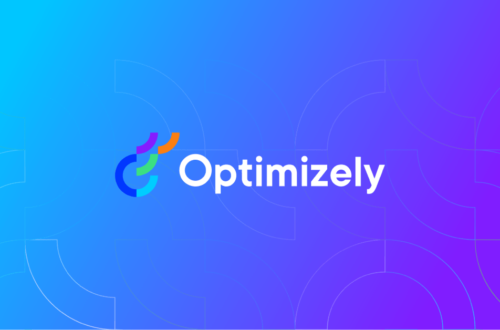Marketing
-
AI in analytics: transforming data into decisions
Foundations and value AI in analytics applies machine learning and automation to turn raw data into reliable, timely decisions. It goes beyond descriptive dashboards to deliver predictive and prescriptive insights that anticipate outcomes and recommend actions. The core value lies in scale and speed. AI can process high-volume, high-velocity data from diverse sources—transactions, sensors, customer interactions—producing insights faster than manual analysis while maintaining consistency across the organization. AI-enabled analytics shifts the role of analysts from report creation to problem framing and model stewardship. Human expertise guides the questions, validates assumptions, and ensures outputs align with business context and ethics. Key capabilities Pattern detection discovers non-obvious relationships, segments, and anomalies. Unsupervised…
-
Optimizely Analytics vs. Amplitude, Statsig, and Eppo
Optimizely Analytics focuses on a warehouse‑native, enterprise experimentation and analytics stack with deep feature‑flag and experimentation tooling, while Amplitude emphasizes product and behavioral analytics, Statsig centers on fast feature flags plus integrated experiment measurement, and Eppo targets warehouse‑native, data‑centric experimentation for teams that need rigorous statistical controls. Introduction Let´s compare Optimizely Analytics, Amplitude, Statsig, and Eppo across purpose, architecture, analytics depth, and developer ergonomics to help teams choose the right experimentation and analytics mix. Platform focus Optimizely positions itself as an enterprise experimentation and feature management platform that scales across web, mobile, and backend environments. Analytics approach Amplitude is primarily a product and behavioral analytics platform built to answer user…
-
What Are the Best AI Agents for B2B Marketing?
AI in B2B Marketing Artificial Intelligence (AI) has become a cornerstone of modern B2B marketing. Companies are increasingly relying on AI agents to streamline operations, personalize outreach, and improve lead generation. These tools are not just futuristic add-ons; they are practical solutions that redefine how businesses connect with other businesses. Unlike traditional marketing automation, AI agents can learn, adapt, and optimize campaigns in real time. This makes them particularly valuable in B2B contexts, where decision-making cycles are longer and personalization is critical. The best AI agents combine data analysis, predictive modeling, and conversational capabilities to deliver measurable results. Lead Generation and Prospecting One of the most important roles of AI…
-
The Real Power of Traffic Alignment
Traffic alignment is the deliberate practice of synchronizing incoming audience flows with the most relevant content, offers, and paths to conversion. When executed correctly, alignment reduces wasted impressions, shortens customer journeys, and increases return on acquisition spend. Core Principles Relevance is the foundational principle of traffic alignment, ensuring each visitor encounters an experience tailored to how they arrived. Intent mapping ties acquisition sources to specific content and offers that match user motivations and stage in the funnel. Control of context preserves message continuity across touchpoints so users see consistent value from first click to conversion. Segmentation of Traffic Sources Segmenting traffic by source type, campaign creative, and user intent enables…
-
Closing sales with effective low-funnel strategies
Low-funnel strategies focus on prospects who are closest to conversion and mastering them multiplies closing rates with efficient use of time and resources. These techniques prioritize urgency, trust, and frictionless paths to purchase, turning intent into committed customers. Lead Qualification and Offer Design Qualify leads rigorously so your team spends time only on prospects who exhibit buying signals. Create offers that reduce risk and accelerate decisions, such as limited-time discounts, bundled packages, or trial periods with clear exit points. Social Proof and Purchase Flow Use social proof targeted at the decision stage with case studies that show measurable outcomes and testimonials from clients in the same industry. Streamline the purchasing…
-
Predictive marketing with AI: How to anticipate consumer needs and improve your strategies
Introduction Predictive marketing with AI uses machine learning and data analytics to forecast customer behavior, enabling brands to anticipate needs and personalize interactions before customers act. This approach transforms historical and real-time data into actionable predictions about buying intent, churn risk, lifetime value, and the best channels and moments to engage each customer. The goal of predictive marketing is to move from reactive campaigns to proactive strategies that increase conversion rates, optimize spend, and deepen customer relationships. Foundations Predictive models rely on diverse data sources such as transaction history, browsing behavior, CRM records, social signals, and contextual data like time, location, and device. Feature engineering extracts meaningful signals from raw…
-
Email Marketing in 2026. Are you ready?
Email Marketing in 2026 Email remains the backbone of direct customer relationships, evolving into a channel that balances automation with human judgment to deliver timely, relevant value. Consent and transparent data practices are nonnegotiable, with clear preference centers that let subscribers choose frequency, content types, and personalization depth. AI powers personalization at scale, dynamically assembling email content, offers, and subject lines based on real-time signals and predicted customer intent. Modular email design becomes standard, enabling interactive components that let recipients take meaningful actions inside the inbox without unnecessary redirects. Measurement shifts from open rates to outcome-focused metrics such as revenue per recipient, retention lift, and higher-funnel influence across channels. First-party…
-
What is Performance Content Marketing? Take a Look!
What is Performance Content Marketing Performance content marketing is a strategic approach that combines the storytelling and value-driven goals of content marketing with the measurable, outcome-focused objectives of performance marketing. It prioritizes content that directly drives actions such as leads, sign-ups, sales, or other defined conversions while maintaining relevance and usefulness for the target audience. The strategy aligns creative assets with clear business metrics and continuous optimization to maximize return on investment. Core Principles Goal-driven content: Every asset is created with a specific, measurable objective in mind. Audience intent: Content is mapped to audience needs and purchase stages to accelerate conversion. Data-first decisions: Performance is tracked and creative choices are…
-
10 Effective Social Marketing Strategies for 2026
10 Effective Social Marketing Strategies for 2026 AI-powered creative and optimization Use generative AI to draft captions, scripts, visuals and A/B variants, and deploy AI-driven optimization to tune targeting, bidding and posting times in real time. Short-form video as primary creative Lead with mobile-first short videos optimized for attention, storytelling and platform-native formats like Reels, Shorts and TikTok Clips. Social commerce and frictionless checkout Build shoppable posts, livestream selling and one-click flows so discovery converts without leaving the social environment. Hyper-personalized content experiences Deliver micro-segmented creatives and offers using behavioral signals, contextual triggers and dynamic creative optimization. Community-first engagement Invest in niche groups, branded communities and recurring live events that…
-
2025 Top 10 Apps and Add‑Ons for Social Marketing
Top 10 Apps and Add‑Ons for Social Marketing Social marketing thrives on tools that save time, sharpen targeting, and turn creativity into measurable results; this article lists the ten best apps and add‑ons you can use to build, scale, and analyze social campaigns effectively. Hootsuite — A comprehensive social media management platform for scheduling, team workflows, and monitoring multiple channels from one dashboard; it’s ideal for agencies and in‑house teams that need centralized control and approval workflows Hootsuite. Buffer — Lightweight scheduling and publishing focused on simplicity and analytics; Buffer excels for small teams and creators who want easy queue management, intuitive reporting, and integration with common content tools Rambox.…





















